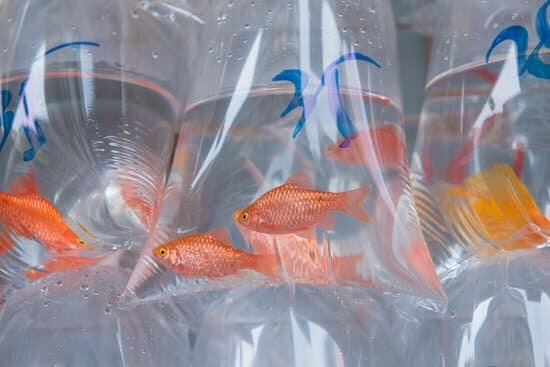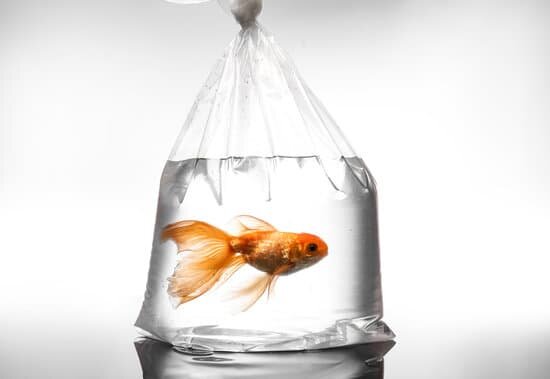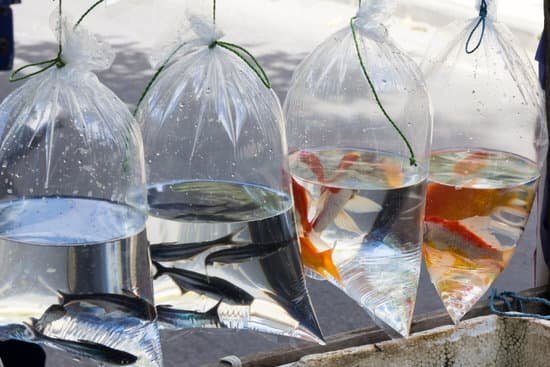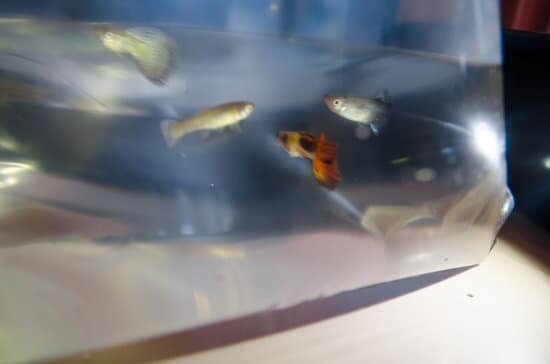Welcome to aquascaping. Are you wondering about the same question that has been troubling many newbie aquarists?
Whenever you purchase a fish from the store, they have always given you your fish in a plastic bag. Surprising, isn’t it?
But, how long can it survive there?
The amount of time your fish can stay in bag certainly depends on the bag you kept your fish. Yes, it depends on the size of the bag, the amount of oxygen in the bag, the weather plays a role, and also the fish that you have inside.
Table of Contents
How Long Can Fish Stay In A Plastic Bag?
According to aquarists or fish-keepers, a fish can last about 5 to 7 hours in a plastic bag containing sufficient oxygen, and some can even survive for two days.

However, this does not mean you will keep them in the bag for that much time. You should transfer your fish to the tank as fast as possible.
It is the easiest transport method that we all have seen. The seller fills the bag with at least 1/3rd of water, and the rest is filled with oxygen.
Factors to Consider when Keeping Fish in Bag
Carrying fish in a plastic bag is not a new transport method. This method has been roughly around at least 30 years.
Breeders use this method to transport the fish to stores, and even if you order your fish online, chances are you will be receiving your fish in a plastic bag as well.
The amount of time the fish can live depends on certain factors.
Here are the factors that are kept in mind when transporting fish in a plastic bag –
- Size of the bag
- If the bag contains air or oxygen
- Number of fish in the bag and their size
- Transport conditions
Fish Will Last Longer in Bag Filled With Oxygen
I hope you are aware of the fact that the air around us contains 78% of nitrogen and 21% of oxygen.

When you start gaining altitude, you begin to lose atmospheric pressure. And when this happens, the oxygen molecules spread out even more. This is why people experience difficulty in breathing in areas situated at a higher altitude.
If you fill up a plastic bag with normal air, the fish in the bag will likely experience hypoxia. So, filling up a plastic bag with normal air will cause the fish to experience hypoxia 4x faster compared to filling the bag with oxygen.
This is why the stores fill up the plastic bag with pressurized oxygen.
So, it is definitely a bad idea to fill up a plastic bag with normal air.
Having Multiple Fish in a Plastic Bag Will Need More Oxygen
The requirement of oxygen depends on the total number of fish and the size of the fish that you have in the bag.

A fish bigger in size will need a comparatively more amount of oxygen than smaller fish. If you plan on buying some bigger fish, it is recommended to get each of them packed in different bags. This way, you will ensure that they are in good condition throughout the journey.
However, if you have a shorter journey to your home, you can easily carry a couple of fish together in one bag. Also, these fish have to be similar or equal in terms of their size. And, you cannot afford to have any delays; otherwise, the journey can be a bit stressful for the fish in the bag.
When buying fish for your tank, it is better to have the tank ready at home so you can directly put them in the tank as soon as you reach home.
The Bigger the Bag, the More Oxygen

I am not sure if you have noticed this or not; the fish stores fill the plastic bag with almost 1/3rd of water. So, more than half, i.e., 2/3rd of the bag, is left, and this is filled up by pumping oxygen into the bag.
This way, the fish in the bag can use the oxygen present in the water and also the extra amount of oxygen-filled into the bag.
If you fill-up the bag like this, this will help the fish maintain their oxygen levels, and they can be comfortable throughout the journey.
It is also a fact that the larger the bag is, the more amount of oxygen it can hold. If you keep the same proportion of oxygen and water, the fish sealed inside the bag will have a comparatively comfortable journey to your home.
Which Containers or Bags to Use for Transportation?
When it comes to transporting your fish, there are two types of containers you can use –
1. Ziplock Bags
2. Poly Bags or Polythene Bags
Ziplock Bags
Well, the ziplock bags may look like a good option, but when you use them in real, you might choose this bag the next time.
The ziplock bags are not that sturdy as they look. Also, the chances of leaking are high. Furthermore, these bags have a narrower bottom which cannot help the bag to carry many types of fish. Carrying fish in a ziplock bag is like stressing your fish instead of comforting them.
The average amount of time that a fish can stay in a ziplock is roughly 30 minutes, not more than that. It is better to carry countable fish in a ziplock, as you cannot pump much oxygen in it, no matter how hard you try.
If you ever use a ziplock, always recycle it. Honestly, it is never good to reuse these kinds of bags.
Poly Bags or Polythene Bags
Popular fish breeders and stores trust the poly bags pretty much. These bags are known as polybags. Made using polythene, the bags are 1.5mm to 3mm in thickness and offer a flat base when you fill it up with water.
These bags are considered to be the ideal bags when it comes to transporting fish.
These bags are pretty wide, and being wide helps you fill them up with maximum oxygen. After you fill it up, seal it up with a tape or rubber band.
To make the extra bag safe, you can tape the corners of the bottom.
Sturdiest Materials Are Not Always the Best
You might think of using a hard plastic container to transport your fish, as the plastic containers are durable, have fewer chances of a leak, and are safe. But, we wish we could be on the same page.
Here are the reasons why plastic containers are certainly not a good option –
- Plastic containers are way pricey compared to polybags.
- You cannot reuse an old plastic container to carry your fish, as your plastic absorbs chemicals and odors, and the chances are that it could leach into the water.
- You will never be able to fill the container with oxygen. Also, there are chances for the oxygen to escape as these containers cannot be that airtight.
- If you carry your fish in a plastic bag, your fish will have a hard time acclimating to their new home.
We strictly do not recommend you use plastic containers for transporting your fish. Do not carry them in a hard container, even for a shorter duration.
In case you have no other options left, you have to buy fresh containers and get your fish transported.
Also, after it is done, do not forget to discard it!
Bonus – Easy Transportation of Fish
Moving from one place to another place and settling is quite stressful for us, and so it is for all the fish in the world.
Here, we will tell you how you can transport your fish without causing them any stress.
If you look in the market, you will find an insulated container that looks similar to an ice chest.
Well, just because it looks like an ice chest, do not put some ice in there.
This insulated container is a great choice for carrying your fish safely. Why use it? Here is why –
- Prevent the polybags from getting tossed all around the vehicle, saves your fish from jerks
- Prevents from the sudden rise and drop in temperature
This is a sure-fire way of ensuring that your fish is safe throughout the trip.
How to Transfer New Fish from the Bag to the Aquarium
Many aquarists transfer their fish to the aquarium in unique ways. There are a few tricks you can follow before you actually transfer your fish to the tank.
Why is Acclimation Necessary?
If you think that you will straightaway dump your fish into the new tank, you might want to give it a second thought because that is something you should never do. This is because, sudden change of water parameter will result in stressing and shocking your fish, as it will not have the time to adjust itself. So, you should never do this.
We will tell you the secrets to properly acclimate your fish to its new home.
Secret to Acclimation
First, you should let the entire bag or bags float for 20 – 25 minutes over the tank’s water surface. Now, add some of the tank’s water to the polybag, and wait for some time, and again some more water to it. Repeat the same quite a few times.
Doing this will give your fish plenty of time to adjust itself to the new water parameter.
Another plus point of this method is that you won’t have to add the water from the polythene bag, and you keep your aquarium safe from getting any sort of aquatic diseases and infections.
The new fish can carry it, but the threat will comparatively be reduced.
Always use a fish net when transferring fish from the bag to the tank.
Step By Step Acclimation
Acclimation processes can be pretty lengthy. It can take you minutes to an hour. Ensure that you have clips; the clips come in handy in preventing the bags from slipping into the aquarium during the ongoing acclimation process.
Steps –
1. Let the bags float on the surface for 20 – 25 minutes.
2. Add a cup or half a cup of tank water, and wait for another 20 minutes.
3. Secure the polythene bag using clips. If the water from the bag slips into the tank water, it will be a disaster.
4. After 20 minutes, add a cup or half a cup of water from the tank to the polythene bag and wait for another 25 minutes.
5. Now it is time to release the fish from the bag. Make sure you use a clean fish net to get a hold of fish, or just pour the bag into the fishnet held over a big bucket.
6. Release the fish in the net, and discard the bag’s water
Now that you have them transferred to their new home, keep an eye on their behavior if they show any such signs of discomfort.
If you find them rubbing themselves over other materials installed in the tank, chances are the water in the tank is a bit alkaline for them.
In such cases, you have to take some water out of the tank and fill it up using regular water. This will help them adjust to the new water parameter.
Conclusion
If you are new to aquascaping, you probably know the average amount of time that fish can stay in a polythene bag. And the duration depends on some factors that we have already discussed in the earlier section of this article.
However, the fish can last up to 5 to 7 hours max in a bag, but you have to make such deductions to reduce the time. Whenever you walk up to a store, you should know what calls to make to make the transportation a good one, instead of making it stressful for your fish.
You may follow these precautionary steps to make the transportation a successful one. Their life depends on you, so make sure you take proper care.
Good luck!


